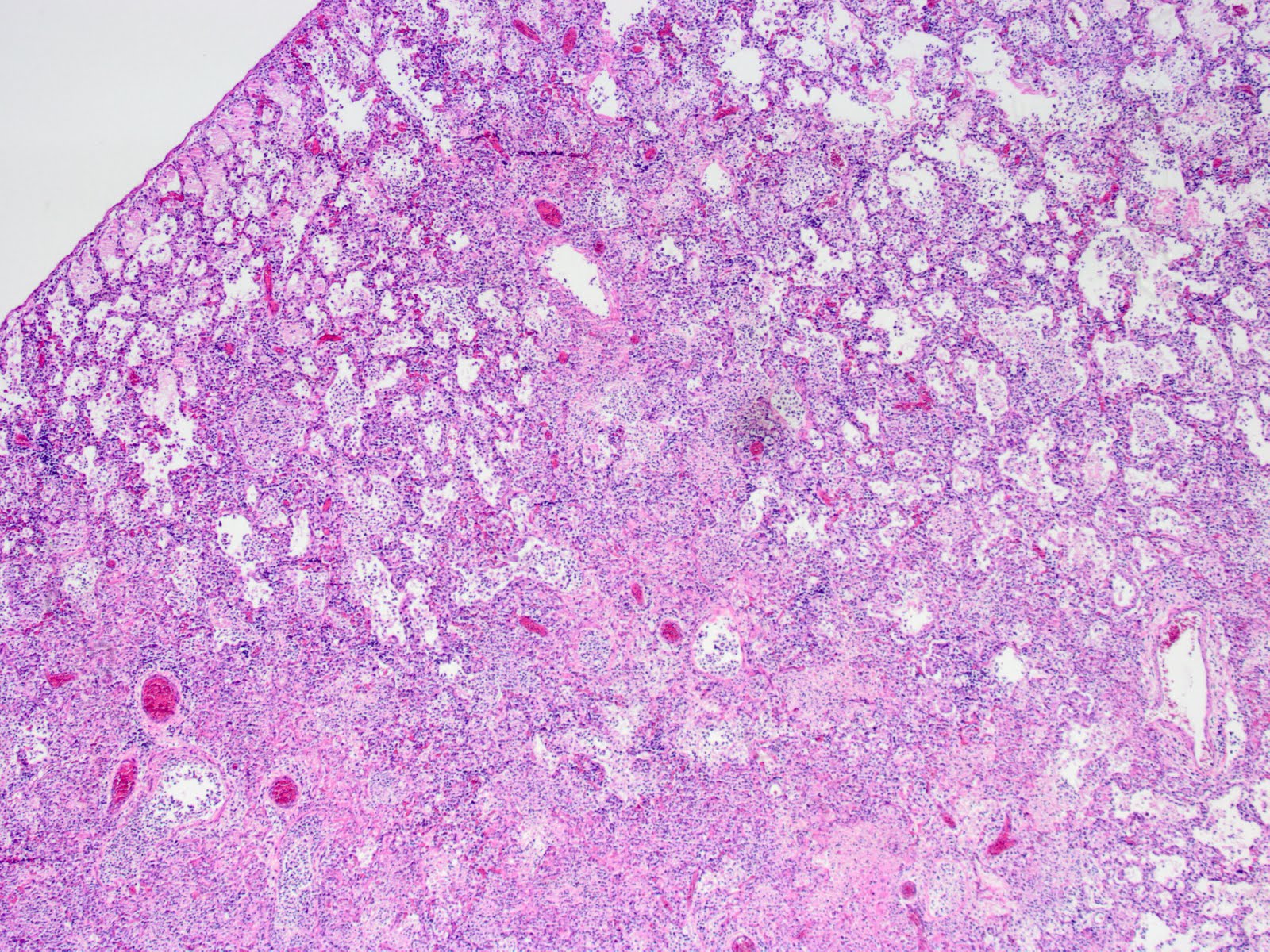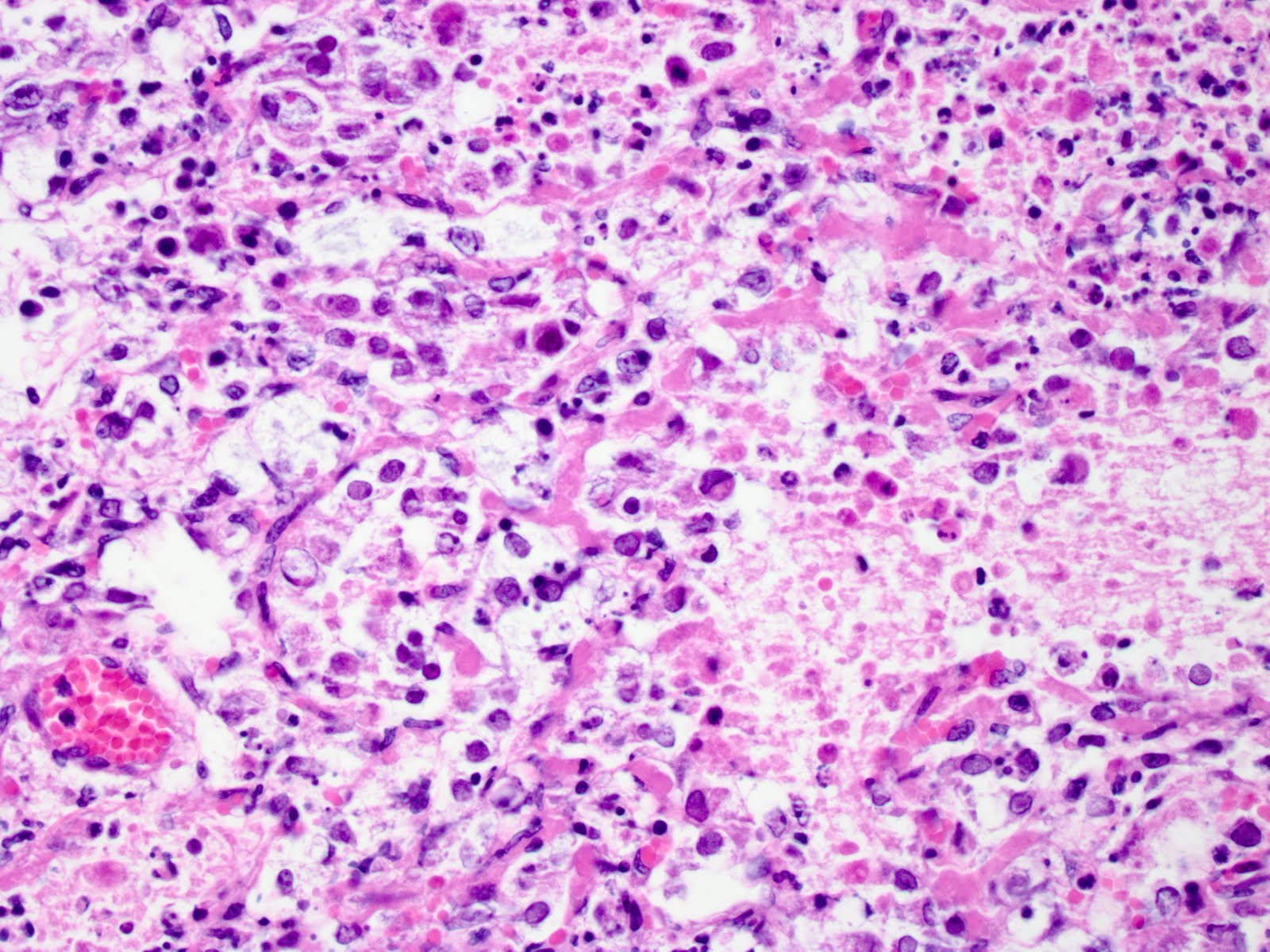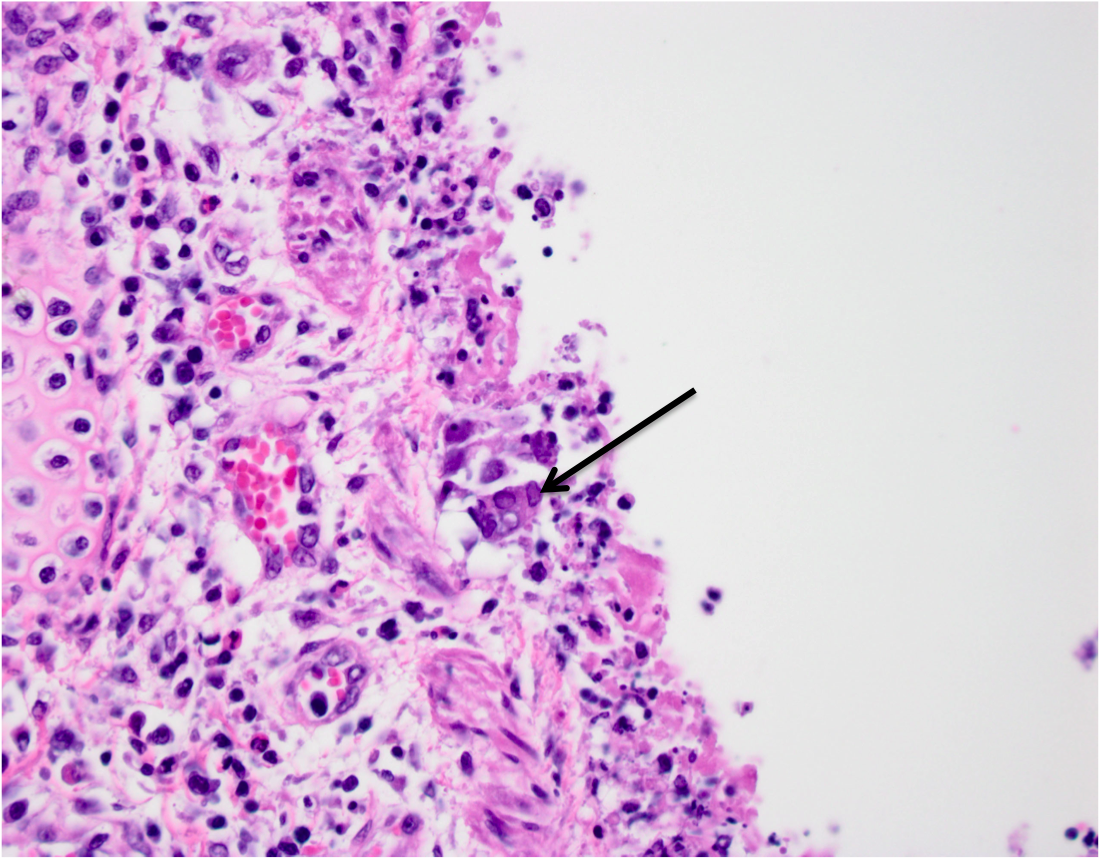Since I’m a veterinary pathologist by training, I thought you might like me to share some aspects of this side of my work with you.
Some of my daily routine involves microscopic evaluation of sections of tissue from animals, often for diagnostic purposes. So I’ll try and share some interesting cases with you from time to time.
I’ll start off today by sharing information about a case of herpesvirus infection in a cat.
History: A two week old kitten died following four days of respiratory distress, with pronounced sneezing and coughing.
Diagnosis: A diagnosis of pneumonia due to FHV-1 (feline herpesvirus-1) infection was made after microscopic evaluation of tissues taken at postmortem examination.
FHV-1 IN CATS: This is a common feline virus that is transmitted between cats by direct contact and exchange of nasal and ocular fluids. “Feline rhinotracheitis” is the classic condition associated with this virus, and typically manifests as upper respiratory disease and conjunctivitis in kittens, similar to this case. Systemic illness with interstitial pneumonia has also been reported in kittens, and such cases of systemic disease can arise as a result of immunosuppression. Additionally, the virus can cause conjunctivitis as well as facial and nasal dermatitis or stomatitis in adult cats.
 |
| The usually clear air spaces in the lung are filled with inflammatory cells & debris |
 |
| Higher magnification view showing intense inflammation with necrotic tissue and debris, along with the characteristic diagnostic finding of viral inclusion bodies in cells. |
 |
| The arrow points to a syncitial cell containing multiple nuclei. These nuclei contain characteristic viral inclusion bodies |
Although this is a devastating disease, the good news is that cats can be vaccinated against the causative virus, thus reducing the incidence or severity of disease.
Cats can be carriers of FHV-1 though – in such cases, if a female cat carrying the virus is infected before she is vaccinated, the vaccination will not be effective in eliminating the latent infection. Subsequently, any stress, such as that associated with pregnancy, will result in viral recrudescence and shedding. Following birth, the mother cat will transmit the virus to her kittens in her milk, or through grooming, direct contact or nasal secretions.
So if your cat or kitten has any signs of respiratory disease – be sure to have him or her examined by your veterinarian so as to ensure the correct diagnosis can be made, and appropriate treatment can follow.
Follow Me!